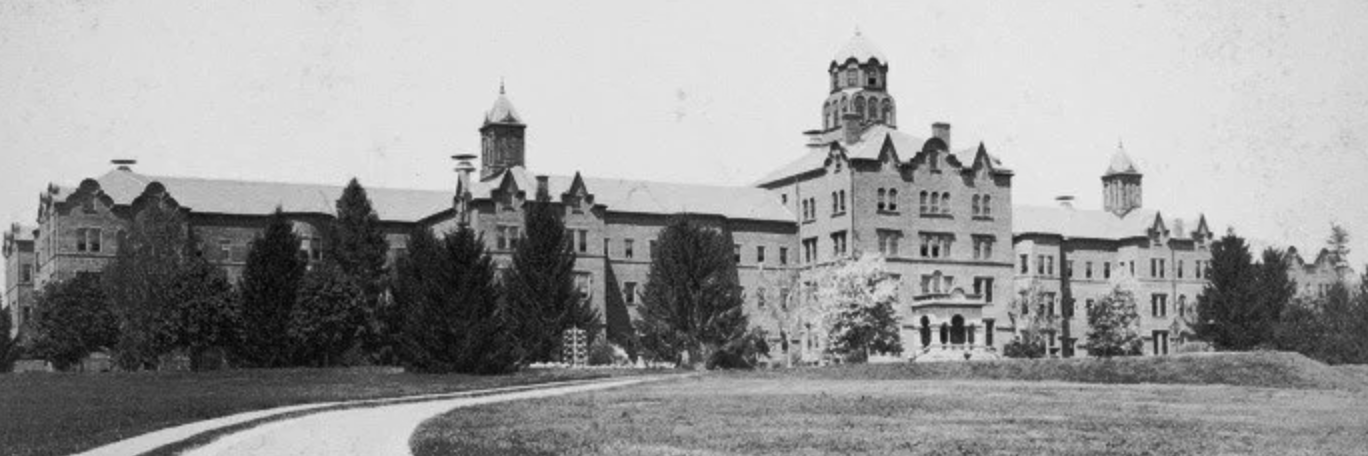This History of the Northampton State Hospital is by no means complete. However, it offers a brief overview of how the hospital grounds developed and changed over the years of operation. The majority of the content is derived from Sanford Bloomberg’s 2006 book titled, “The History of Northampton State Hospital 1858-1993: Phases in the Treatment and Civil Rights of the Mentally Ill.” Images and photographs provided by Historic Northampton, Smith College Archives, Tom Riddell’s archive, Mark Majeski, UMass Amherst Special Collections, and my own photography.
Timeline of Northampton State Hospital
In 1855, motivated by the advocacy and teachings of Dorothea Dix, the Commonwealth of Massachusetts selected Northampton as the site for the state’s 3rd hospital for the insane. It was intended to reform the prison-like conditions of former psychiatric hospitals by fostering humane living conditions and providing individualized treatment. By 1858 the construction of the main complex of the then Northampton Lunatic Hospital was completed. Shortly after, the hospital began operating with the recommended capacity of supporting 250 individuals. The sprawling complex was intentionally designed to be a model for the construction of other psychiatric hospitals in the North.
By 1910, the living conditions of the hospital rapidly declined. As a result of increased social anxieties surrounding people with disabilities, fears of arriving immigrants, and soldiers returning form WWI, a growing elderly population, and false conceptions of hysteria–by the early 1920s, the hospital’s admitted population swelled to 1,788 beds. Thousands of people were admitted regardless of their actual health and decisions, simply because they didn’t fit social expectations. The hospital transformed from a landmark care facility to a warehouse for those isolated from society. By 1955, it housed over 2,500 patients in facilities designed to sustain 250. With limited time and resources the staff members eliminated original individualized treatments such as occupational therapy and were forced to implement new medical treatments such as physical restraints, electric shock, insulin induced comas, and wet-packing. These methods were designed to subdue patients and keep the wards at peace rather than treat or alleviate their discomfort. The living conditions became so deplorable that a Consent Decree (Brewster vs. Dukakis) was filed against the Hospital in 1978 –citing neglect and poor standard of patient treatment. By the mid-80 the hospital began downsizing and by 1993 the last 6 patients were forcibly evicted from the hospital’s deteriorating campus.
Today, signs of the hospital’s existence and the community that once resided there have been effectively erased from Northampton’s public memory. The hospital’s campus is being redeveloped into apartment complexes and renamed “Village Hill.” Yet despite developers’ efforts at erasure, the memories of the 65,000 people who once lived within the hospital need to be recognized. In spite of the horrific conditions, for many of the people admitted, the hospital served as their home and community. It is important to bear witness to their lived experiences and their acts of resistance against inhumane treatment, as well as recognize why they were forcibly institutionalized, and critically analyze the history of forced psychiatric treatment within the U.S.[1]
References
[1] Bloomberg, Sanford, The History of Northampton State Hospital, 1858-199 (Florence: Collective Coppies, 2006).
